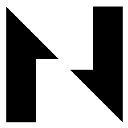-
 Bitcoin
Bitcoin $117500
2.04% -
 Ethereum
Ethereum $3759
3.02% -
 XRP
XRP $3.171
3.30% -
 Tether USDt
Tether USDt $1.000
0.03% -
 BNB
BNB $782.4
2.52% -
 Solana
Solana $187.2
5.62% -
 USDC
USDC $0.0000
0.02% -
 Dogecoin
Dogecoin $0.2380
5.26% -
 TRON
TRON $0.3175
1.07% -
 Cardano
Cardano $0.8227
4.03% -
 Hyperliquid
Hyperliquid $44.50
5.44% -
 Sui
Sui $4.020
10.07% -
 Stellar
Stellar $0.4396
6.28% -
 Chainlink
Chainlink $18.32
4.55% -
 Hedera
Hedera $0.2628
10.71% -
 Bitcoin Cash
Bitcoin Cash $554.8
4.90% -
 Avalanche
Avalanche $24.20
4.60% -
 Litecoin
Litecoin $113.7
2.31% -
 Shiba Inu
Shiba Inu $0.00001413
5.99% -
 UNUS SED LEO
UNUS SED LEO $8.984
0.11% -
 Toncoin
Toncoin $3.326
7.22% -
 Ethena USDe
Ethena USDe $1.001
0.00% -
 Uniswap
Uniswap $10.49
4.56% -
 Polkadot
Polkadot $4.092
4.02% -
 Monero
Monero $326.6
1.30% -
 Dai
Dai $1.000
-0.01% -
 Bitget Token
Bitget Token $4.570
2.49% -
 Pepe
Pepe $0.00001267
5.10% -
 Aave
Aave $297.3
3.10% -
 Cronos
Cronos $0.1344
4.10%
What should I do if KDJ shows an M head pattern? Is it a sell signal?
The M head pattern on the KDJ indicator signals a potential bearish reversal, but traders should confirm with price action, volume, and other indicators before acting.
May 24, 2025 at 01:35 am
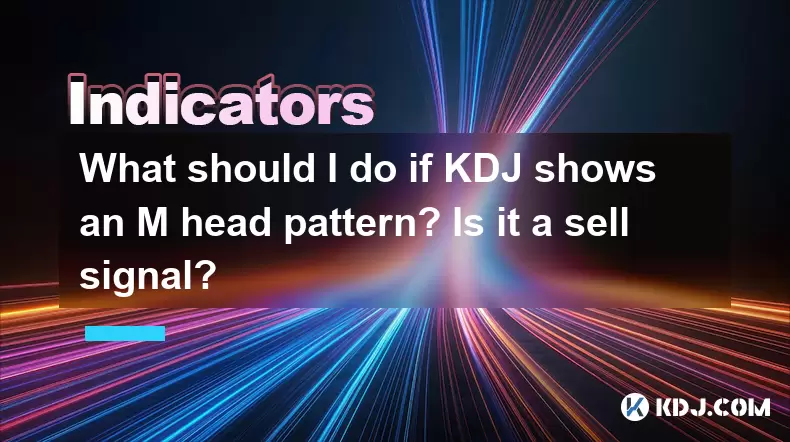
When analyzing cryptocurrency charts, the KDJ indicator is a popular tool used by traders to identify potential buy and sell signals. One specific pattern that traders often look for is the M head pattern on the KDJ indicator. If you encounter this pattern, it's important to understand what it means and how you should react. In this article, we will explore what the M head pattern on the KDJ indicator signifies, whether it is a reliable sell signal, and the steps you should take if you see this pattern on your charts.
Understanding the KDJ Indicator
The KDJ indicator is a momentum oscillator that combines aspects of the Stochastic Oscillator with moving averages. It consists of three lines: K line, D line, and J line. The K line and D line are typically plotted on the chart, while the J line is calculated but not always displayed. The KDJ indicator ranges from 0 to 100 and is used to identify overbought and oversold conditions in the market.
- K line: Represents the fastest line and is calculated based on the highest and lowest prices over a specific period.
- D line: A moving average of the K line, providing a smoother signal.
- J line: A more sensitive line calculated from the K and D lines, often used for additional confirmation.
Identifying the M Head Pattern
The M head pattern on the KDJ indicator is a bearish reversal pattern. It forms when the K and D lines create two peaks of similar height, resembling the letter "M". This pattern indicates that the market may be transitioning from an uptrend to a downtrend.
To identify an M head pattern on the KDJ indicator, follow these steps:
- Look for the K and D lines to rise and form a peak.
- After the first peak, the K and D lines should fall and then rise again to form a second peak.
- The second peak should be at a similar level to the first peak, completing the M shape.
- Confirm the pattern by observing the J line, which should also show a similar M shape.
Is the M Head Pattern a Sell Signal?
While the M head pattern on the KDJ indicator can be a strong indication of a potential reversal, it should not be considered a definitive sell signal on its own. Additional confirmation is necessary to increase the reliability of the signal. Here are some factors to consider:
- Price Action: Look for bearish candlestick patterns or a break below key support levels to confirm the reversal.
- Volume: An increase in trading volume during the formation of the second peak can validate the bearish signal.
- Other Indicators: Use other technical indicators, such as the Relative Strength Index (RSI) or Moving Average Convergence Divergence (MACD), to confirm the bearish momentum.
Steps to Take When You See an M Head Pattern
If you identify an M head pattern on the KDJ indicator, here are the steps you should take to make informed trading decisions:
- Confirm the Pattern: Ensure that the K and D lines have formed two distinct peaks of similar height, and that the J line supports this pattern.
- Analyze Price Action: Look for bearish candlestick patterns, such as a bearish engulfing or shooting star, around the second peak of the M head pattern.
- Check for Support Levels: Identify key support levels on the price chart. A break below these levels can confirm the bearish reversal.
- Monitor Volume: An increase in trading volume during the formation of the second peak can strengthen the bearish signal.
- Use Additional Indicators: Confirm the bearish momentum using other technical indicators, such as the RSI or MACD.
- Set Stop-Loss and Take-Profit Levels: If you decide to enter a short position, set a stop-loss above the second peak of the M head pattern and a take-profit level based on key support levels or Fibonacci retracement levels.
Example of Trading Based on the M Head Pattern
To illustrate how to trade based on the M head pattern on the KDJ indicator, let's consider an example:
- Identify the M Head Pattern: You notice that the K and D lines on the KDJ indicator have formed two peaks of similar height, creating an M shape. The J line also shows a similar pattern.
- Confirm with Price Action: You observe a bearish engulfing pattern on the price chart around the second peak of the M head pattern.
- Check Support Levels: You identify a key support level at $50,000 on the price chart.
- Monitor Volume: You notice an increase in trading volume during the formation of the second peak, indicating strong bearish momentum.
- Use Additional Indicators: The RSI is also showing a bearish divergence, confirming the potential reversal.
- Enter a Short Position: Based on the confirmed M head pattern and additional indicators, you decide to enter a short position. You set a stop-loss at $55,000 (above the second peak) and a take-profit at $45,000 (based on the key support level).
Conclusion
The M head pattern on the KDJ indicator is a powerful tool for identifying potential bearish reversals in the cryptocurrency market. However, it should not be used as a standalone signal. By confirming the pattern with price action, volume, and other technical indicators, you can increase the reliability of your trading decisions. Always set appropriate stop-loss and take-profit levels to manage risk effectively.
Frequently Asked Questions
Q1: Can the M head pattern appear on other technical indicators?
Yes, the M head pattern can appear on other technical indicators, such as the RSI or the price chart itself. However, the interpretation and confirmation process may differ depending on the indicator used.
Q2: How long does it typically take for an M head pattern to form on the KDJ indicator?
The duration of the M head pattern formation can vary depending on the time frame of the chart. On shorter time frames, such as 15-minute or 1-hour charts, the pattern may form more quickly than on longer time frames, such as daily or weekly charts.
Q3: Is it possible for the M head pattern to fail, and what should I do if it does?
Yes, the M head pattern can fail if the price does not follow through with the expected bearish reversal. If the pattern fails, it's important to reassess your analysis and consider other potential scenarios. Always use stop-loss orders to limit potential losses if the pattern does not play out as expected.
Q4: Can the M head pattern be used for long-term trading strategies?
While the M head pattern can be applied to various time frames, it is more commonly used for shorter-term trading strategies. For long-term trading, it's advisable to use the M head pattern in conjunction with other long-term indicators and fundamental analysis to make more informed decisions.
Disclaimer:info@kdj.com
The information provided is not trading advice. kdj.com does not assume any responsibility for any investments made based on the information provided in this article. Cryptocurrencies are highly volatile and it is highly recommended that you invest with caution after thorough research!
If you believe that the content used on this website infringes your copyright, please contact us immediately (info@kdj.com) and we will delete it promptly.
- Cardano (ADA) Price Check: Bullish Potential or Better Bets?
- 2025-07-26 21:10:12
- Pi Network, Remittix, and the Binance Listing Buzz: What's the Deal?
- 2025-07-26 20:50:12
- XRP in 2026: Altcoin Daily's Bullish Flip and What It Means for You
- 2025-07-26 21:50:12
- Meme Coin Mania: Is Punisher Coin the New Dogecoin?
- 2025-07-26 21:50:12
- Ethereum ETFs Surge, Bitcoin Holds Steady, and Staking Yields Soar: A Crypto Trifecta
- 2025-07-26 21:55:12
- Bitcoin to $1 Million? Decoding the Future of Crypto
- 2025-07-26 20:55:19
Related knowledge
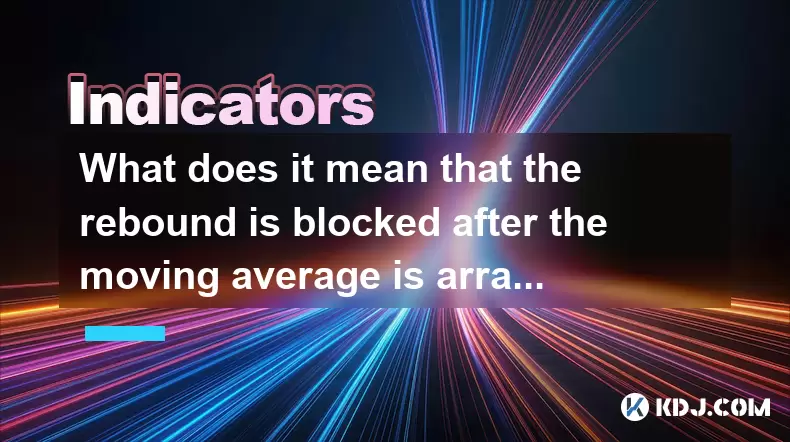
What does it mean that the rebound is blocked after the moving average is arranged in a short position for the first time?
Jul 26,2025 at 10:51am
Understanding the Short-Term Moving Average ConfigurationWhen traders refer to a 'short position arrangement' in moving averages, they are describing ...
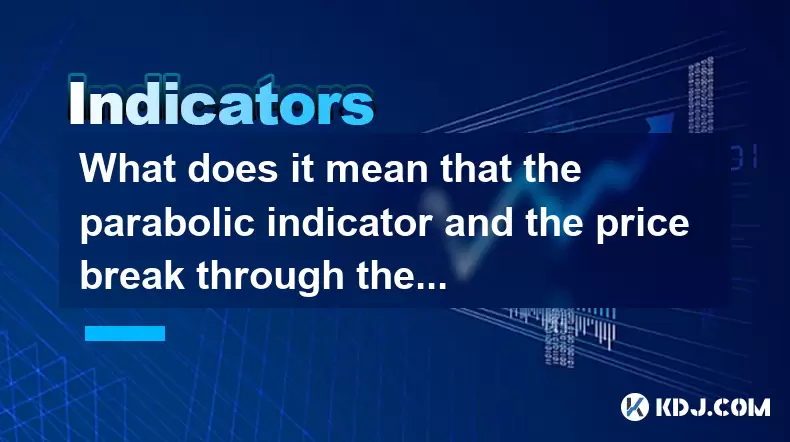
What does it mean that the parabolic indicator and the price break through the previous high at the same time?
Jul 26,2025 at 07:22pm
Understanding the Parabolic Indicator (SAR)The Parabolic SAR (Stop and Reverse) is a technical analysis tool developed by J. Welles Wilder to identify...
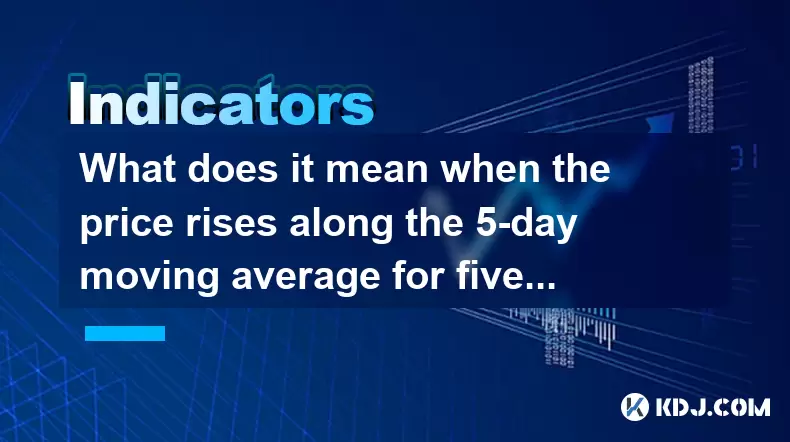
What does it mean when the price rises along the 5-day moving average for five consecutive days?
Jul 26,2025 at 08:07am
Understanding the 5-Day Moving Average in Cryptocurrency TradingThe 5-day moving average (5DMA) is a widely used technical indicator in cryptocurrency...
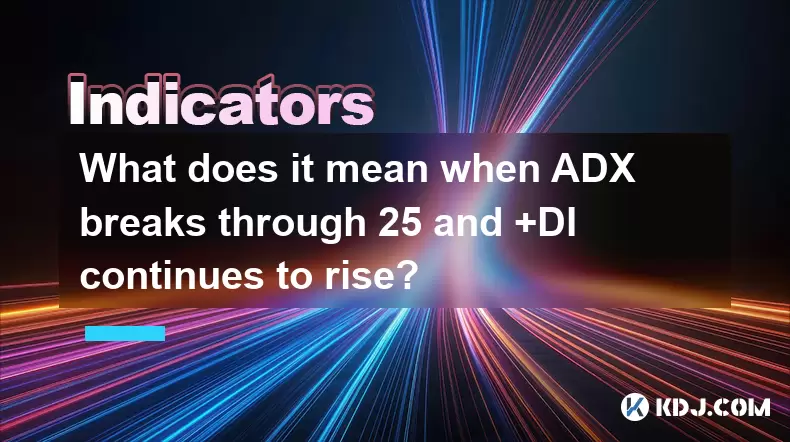
What does it mean when ADX breaks through 25 and +DI continues to rise?
Jul 26,2025 at 07:00pm
Understanding the ADX Indicator and Its ThresholdsThe Average Directional Index (ADX) is a technical analysis tool used to measure the strength of a t...
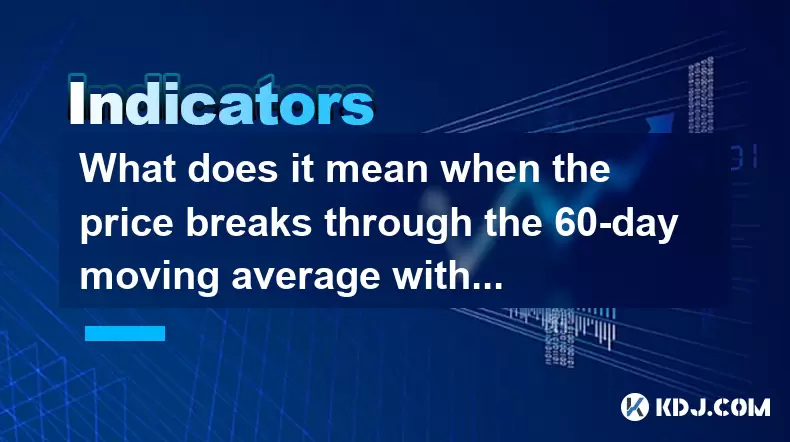
What does it mean when the price breaks through the 60-day moving average with a large volume but shrinks the next day?
Jul 26,2025 at 06:01am
Understanding the 60-Day Moving Average in Cryptocurrency TradingThe 60-day moving average (60DMA) is a widely used technical indicator in the cryptoc...
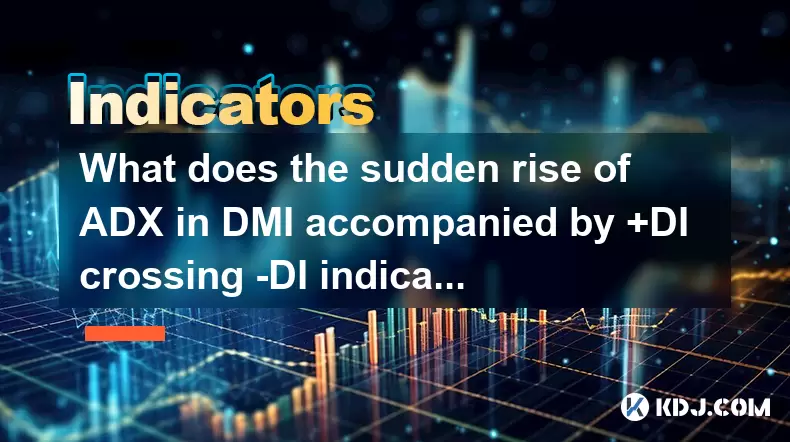
What does the sudden rise of ADX in DMI accompanied by +DI crossing -DI indicate?
Jul 26,2025 at 01:21pm
Understanding the DMI and Its Core ComponentsThe Directional Movement Index (DMI) is a technical analysis tool used to determine the presence and stre...

What does it mean that the rebound is blocked after the moving average is arranged in a short position for the first time?
Jul 26,2025 at 10:51am
Understanding the Short-Term Moving Average ConfigurationWhen traders refer to a 'short position arrangement' in moving averages, they are describing ...

What does it mean that the parabolic indicator and the price break through the previous high at the same time?
Jul 26,2025 at 07:22pm
Understanding the Parabolic Indicator (SAR)The Parabolic SAR (Stop and Reverse) is a technical analysis tool developed by J. Welles Wilder to identify...

What does it mean when the price rises along the 5-day moving average for five consecutive days?
Jul 26,2025 at 08:07am
Understanding the 5-Day Moving Average in Cryptocurrency TradingThe 5-day moving average (5DMA) is a widely used technical indicator in cryptocurrency...

What does it mean when ADX breaks through 25 and +DI continues to rise?
Jul 26,2025 at 07:00pm
Understanding the ADX Indicator and Its ThresholdsThe Average Directional Index (ADX) is a technical analysis tool used to measure the strength of a t...

What does it mean when the price breaks through the 60-day moving average with a large volume but shrinks the next day?
Jul 26,2025 at 06:01am
Understanding the 60-Day Moving Average in Cryptocurrency TradingThe 60-day moving average (60DMA) is a widely used technical indicator in the cryptoc...

What does the sudden rise of ADX in DMI accompanied by +DI crossing -DI indicate?
Jul 26,2025 at 01:21pm
Understanding the DMI and Its Core ComponentsThe Directional Movement Index (DMI) is a technical analysis tool used to determine the presence and stre...
See all articles




















































































